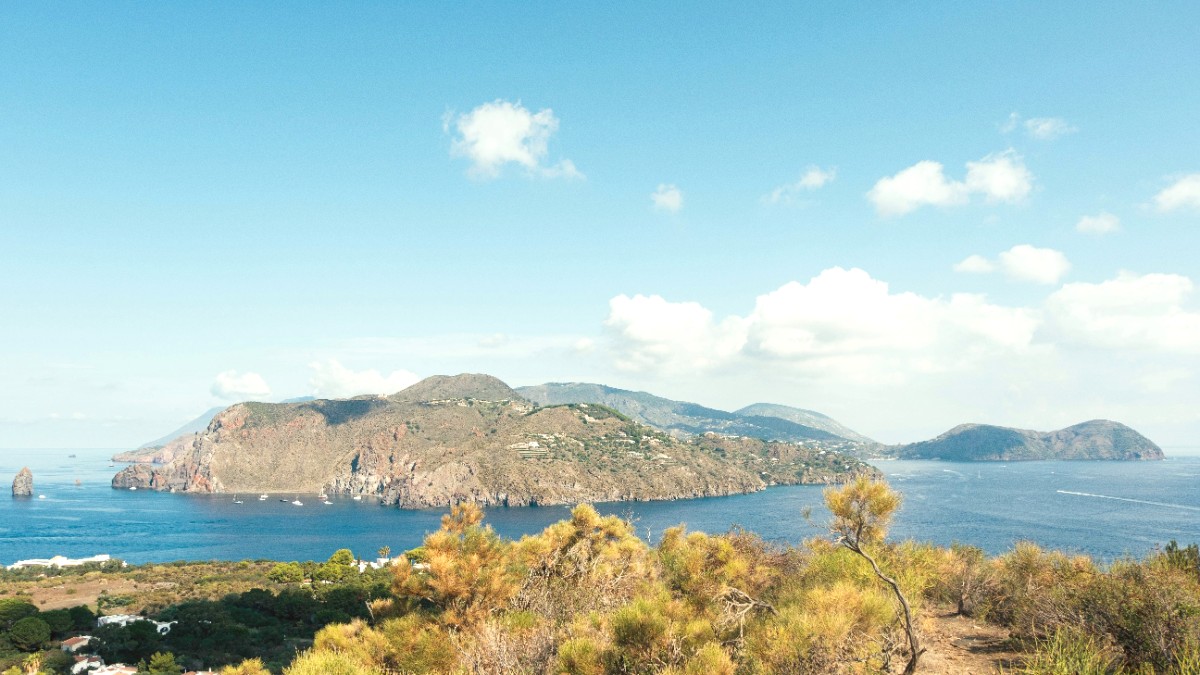
Italy
These islands serve various travel preferences. Thrill-seekers find a challenge in a volcano ascent. Those desiring relaxation find serene coves and clear waters for swimming. Food enthusiasts savor fresh seafood and local wine. The combination of adventure, tranquility, and authentic island life draws people from around the globe. Prepare for days filled with sunshine, fresh air, and moments of true discovery. Each island promises a new experience, from the lively hub of Lipari to the untouched quiet of Alicudi.
The Aeolian Islands, known in Italian as Isole Eolie, form a volcanic archipelago in the Tyrrhenian Sea. This body of water is part of the Mediterranean Sea, located off the northern coast of Sicily, Italy. The islands grew from the sea due to intense volcanic activity over millions of years. This geological process shaped their dramatic landscapes, creating steep cliffs, rocky coastlines, and distinct volcanic cones. The archipelago contains seven main islands, each contributing to the region's diverse geography and visitor experience.
The seven main islands are: Lipari, Salina, Vulcano, Stromboli, Panarea, Filicudi, and Alicudi. Several smaller islets and rocks also dot the surrounding waters, adding to the picturesque scenery. Lipari, the largest and most populated island, serves as the archipelago's administrative and commercial center. It offers the widest range of services and transport connections. Salina stands out with its twin volcanic peaks, which add to its lush green landscapes, a contrast to some of the other drier islands. Vulcano, located closest to Sicily, takes its name from the word "volcano" itself, a testament to its active fumaroles and thermal mud baths.
The islands draw visitors with their striking landscapes, shaped by active volcanoes, and their inviting coastal areas. Stromboli and Vulcano are the most well-known for their volcanic activity. Stromboli shows continuous, minor eruptions, a dramatic sight, especially after sunset. Vulcano features active fumaroles. These geological features make truly unique and memorable experiences for visitors. Beyond their fiery heart, the islands boast diverse coastlines. You will find black sand beaches, formed from volcanic rock, specifically on Vulcano and Stromboli.
Tourism drives the local economy, drawing visitors eager to experience the islands' unique appeal. Fishing remains a traditional industry, supplying local restaurants with fresh, delectable seafood daily. Agriculture also plays a role, with capers from Salina and the sweet Malvasia wine specifically renowned. These local products offer a taste of the islands' heritage and make excellent souvenirs.
The largest island, serving as the bustling administrative and commercial center. It has the widest range of accommodations, restaurants, and shops.
Known for its two distinct volcanic peaks, Salina is the greenest island, famous for its capers and Malvasia wine.
Closest to Sicily, it holds active fumaroles and unique black sand beaches. Check access rules for the crater climb.
Home to one of the world's most active volcanoes, offering the unique experience of watching eruptions.
The smallest and most fashionable inhabited island, drawing a chic crowd with its boutique hotels and lively summer nightlife.
The Aeolian Islands hold a rich and layered history, recognized as an UNESCO World Heritage site. This designation highlights their unique geological importance, showing an exceptional record of ongoing volcanic phenomena and classical forms of volcanic island formation. This continuous geological activity shaped the islands for millennia, creating a living laboratory for geological study. Beyond their geological value, the islands possess a deep human history, with evidence of settlement dating back to the Neolithic period, around 4000 BCE.
Early human presence on Lipari, the largest island, centered on the trade of obsidian. Obsidian, a naturally occurring volcanic glass, was highly valued in ancient times for making sharp tools and weapons. Lipari was a significant source of this material in the Mediterranean, leading to a thriving trade network. Archaeological findings on Lipari, including tools and pottery, reveal the prosperity of these early communities. The Museo Archeologico Regionale Eoliano on Lipari houses many of these artifacts, providing a window into the islands' prehistoric past.
Over subsequent millennia, various civilizations influenced the Aeolian Islands. The Greeks arrived, leaving their mark on the culture and place names. The name "Aeolian" itself derives from Aeolus, the Greek god of winds, who was said to reside on one of the islands. Later, the Romans established their presence, followed by Byzantine, Arab, and Norman rule. Medieval structures, specifically the fortified Lipari Castle, offer tangible links to these later periods, a testament to the islands' strategic importance.
A visit here allows for immersion in a world where nature's power and human history intertwine, creating a travel experience unlike any other.
Filicudi and Alicudi, the westernmost islands, remain largely untouched. They show rugged terrain, peaceful isolation, and a glimpse into traditional island life, with fewer services and less development. Alicudi is especially remote, relying on mules for transport on its steep paths.
The islands sit off the coast of Milazzo, a port town in Sicily. Milazzo serves as the main gateway for travelers coming from the mainland, with frequent ferry and hydrofoil connections. Other departure points include Naples, Palermo, and Reggio Calabria, providing various access routes. The total land area of the archipelago is approximately 114.7 square kilometers. This relatively compact size makes island hopping manageable. You travel between several islands during your stay, experiencing their individual characters.
Long days of sunshine and warm sea are perfect for beach lovers and water activities.
Enjoy pleasant temperatures and fewer crowds in spring and autumn, ideal for exploration.
Experience authentic island life and tranquil landscapes at lower costs.
The Tyrrhenian Sea surrounding the islands is known for its clear, warm waters and abundant marine life. This makes it a favored spot for swimming, snorkeling, and diving. The sea also forms the main transport route, connecting the islands to each other and to the mainland.